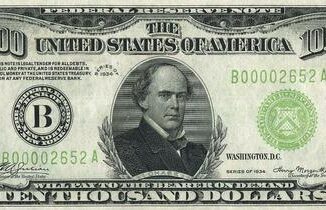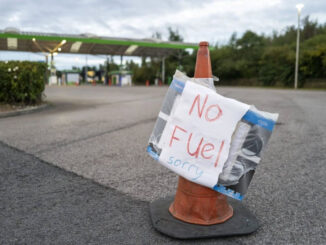
- European Union regulations obligated banks to increase loans and bonds for environmentally friendly industries, leading to a boost in green financing.
- Banks like Credit Agricole are voluntarily shifting away from financing oil and gas projects, aligning with sustainable investment trends.
- The U.S. is experiencing slower sustainable financing growth due to political resistance, with institutions like BlackRock and Bank of America managing substantial investments in both oil and green sectors.
The world’s largest banks made $3 billion in profits from bond underwriting and loan provisions in the “environmentally friendly” category last year.
That amount compared with the $2.7 billion that banks made from bonds and loans provided to the oil industry. Some would hail this as an achievement for transition-focused industries. But is it?
To begin with, as Bloomberg points out in the article containing the loan profit data, one reason for the increase in transition financing was stricter EU regulation. With that regulation, the European Union essentially obliged banks to give more loans and underwrite more bonds for companies in, for example, the wind and solar energy sectors.
In other words, it was not fully by these banks’ own choice that they provided more loans and underwrote more bonds for the industries classified as environmentally responsible. It was by a Brussels mandate.
This is not to say that the development was entirely involuntary, of course. On the contrary, several banks have pledged to shrink their lending exposure to the oil and gas industry, with French Credit Agricole the latest to declare an end to the financing of new oil and gas projects last December.
Yet the effect of stricter EU regulation should not be underestimated: it puts banks at risk of higher capital requirements and even fines unless they provide more loans to the industries related to the transition and reduce the financing of the oil and gas industry.
In this context, it is hardly a surprise that European banks led the increase in green financing—even though the biggest issuer of such financing was Japan’s MUFG. In contrast, U.S. banks were less inclined to fund projects labeled environmentally friendly.
The reason was mostly political: there has been a backlash against what some states call discriminatory investment policies by some of the world’s largest banks as they try to shun the oil and gas industry in favor of wind, solar, hydrogen, and EVs.
This backlash continues and has already forced some financial industry majors to make declarations that they are not, in fact, against oil and gas. It all began back in 2022 when Texas accused BlackRock and nine European investment mammoths of boycotting the oil and gas industry and threatened to divest its own money from them in response.
The asset manager responded by assuring Texas authorities that it does not boycott oil and gas and is very much in favor of energy investments in the sector. In a letter to the Texas comptroller, BlackRock reported that it has investments of some $310 billion in the oil and gas industry, of which $115 billion is in Texas.
In the United States, then, so-called sustainable financing goes slower in the direction the government wants it to go. But it does go there: Bank of America last year had $32.3 billion in financing exposure to low-carbon energy supply, as Bloomberg reported, while its exposure to oil and gas stood at $32 billion. Wells Fargo, on the other hand, was more than twice as invested in oil and gas than it was in wind, solar, EVs, and hydrogen. Its low-carbon exposure last year was $14.3 billion versus $35.7 billion for oil and gas.
Government policies and regulations, then, are vital for the switch from financing oil and gas, considered an industry with no long-term future, to financing the energy industries that are believed to have that long-term future. But there is another critical factor, too.
Last year, wind and solar companies suffered a massive stock rout. The S&P Clean Energy Index dropped by over 20% in two months. The reason behind the rout was the series of interest rate hikes that both the European Central Bank and the Fed implemented over the past two years in a bid to combat inflation. And the reason that wind and solar were more susceptible to the effects of inflation-fighting monetary policy was that they are a lot more dependent on loan financing than oil and gas producers.
“To support rapid growth, you need to keep leveraging the balance sheet or issue equity. In a zero-rate environment, this formula worked. In a higher-rate environment, it falls apart,” David Souccar, portfolio manager at Vontobel Asset Management, explained to the Financial Times.
In other words, low-carbon energy companies are extra vulnerable to higher rate hikes because they lack the resources to weather the effects of such policies. The reason they are so vulnerable is that they simply do not make as much money as the oil and gas industry. The market they operate on is quite different, with set long-term prices for the electricity they produce and equally set subsidies.
Banks, then, made more money from lending to wind and solar—and other industries classified as green—because these industries rely more on loan finance to function and grow. And they also made more money from lending to these industries because many of them were essentially forced to lend more to these industries.



